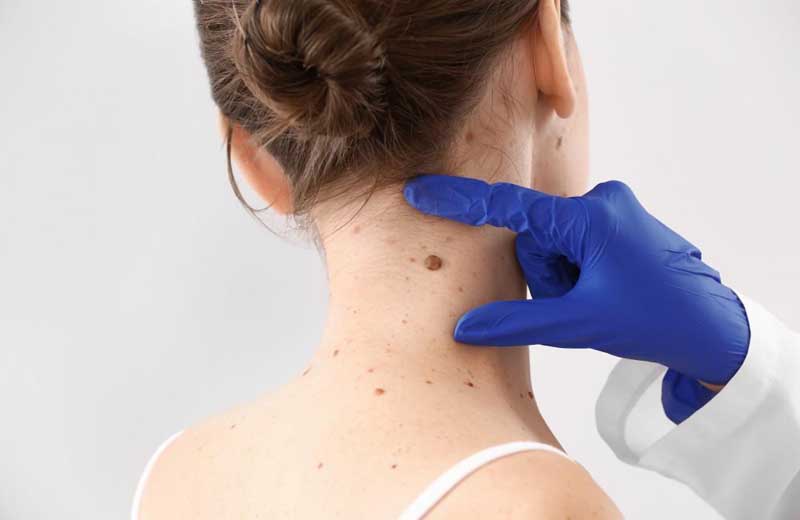Call Us
310-274-4401
Blog
Understanding the ABCDEs of Moles

Moles, also known as “beauty marks,” are typically benign collections of pigment-producing cells that hang out around the top layer of skin. These marks can be almost unnoticeable. Sometimes, they are flesh-colored. But they may also be brown, blue, or black.
Moles are so common that you probably do not even pay attention to yours. But you should. At Rapaport Dermatology, Dr. Vicki Rapaport and her team of skincare specialists advise patients to perform monthly checks for any changes that may indicate the presence of melanoma, the most dangerous form of skin cancer.
An Introduction to Melanoma
Skin cancer is the most common of all cancers. Melanoma, cancer that develops in the skin’s epidermal layer, only accounts for about 1% of skin cancer diagnoses but is responsible for most deaths. Melanoma is a cancerous growth that forms when ultraviolet (UV) light, usually from the sun or tanning beds, damages the skin’s cellular DNA.
Melanoma forms in melanocytes, which make melanin, a brown pigment that gives skin a tan or brown color. This darkening of the skin protects the deeper layers of the skin from the UV radiation effects. With excessive UV radiation exposure, mutations may be triggered, causing the cells to multiply and lead to cancer.
Although melanoma is less common than other skin cancers, such as basal cell and squamous cell cancers, it is more dangerous and can spread much more quickly. Because melanoma is much easier to detect than other cancers, the chances of surviving it are much higher if caught early.
If you have moles on your body, monitoring them for abnormalities is incredibly important to catch cancer quickly. Melanoma rates have been on the rise for the past 30 years. The American Cancer Society estimates that there will be more than 96,000 diagnoses in 2019, and over 7,000 will be fatal.
Finding Melanoma
Melanoma is most likely to develop on the chest and back in men and on women’s legs. However, they can develop anywhere on the body, including the neck and face. Although these sites are common, they are less common in people with darkly pigmented skin. The African American community sees a higher prevalence of skin cancer under the nails, their palms, and the soles of their feet. In rare instances, melanoma can also form in the eyes, mouth, and genital regions.
The ABCDEs of Moles
Any irregularities in your moles should be noted and checked for signs of melanoma. There are five central irregularities we look for in moles to signify cancers:
- Asymmetry: Benign moles are usually round and symmetrical. If you notice a mole with asymmetrical edges, this may be an indication of cancer.
- Border: Mole borders should be smooth, not irregular or bumpy.
- Color: Although moles can be black, brown, flesh-colored, or even have a blue tint, each one should only be one color. Precancerous moles may have a mix of colors.
- Diameter: Any mole with a diameter larger than 6mm (the eraser on a pencil) should be evaluated by a dermatologist.
- Evolving: Moles should have a static appearance. A mole that begins changing signifies that cells are reproducing and should also be evaluated by a dermatologist.
If you have moles, even if you do not see any irregularities, you should make it a habit to examine each of them monthly. Besides, be sure to note any new marks that show up on your body.
Melanoma can spread aggressively and is the most severe type of skin cancer. If any of your moles meet the criteria above, call the location nearest you or request an appointment online today.
